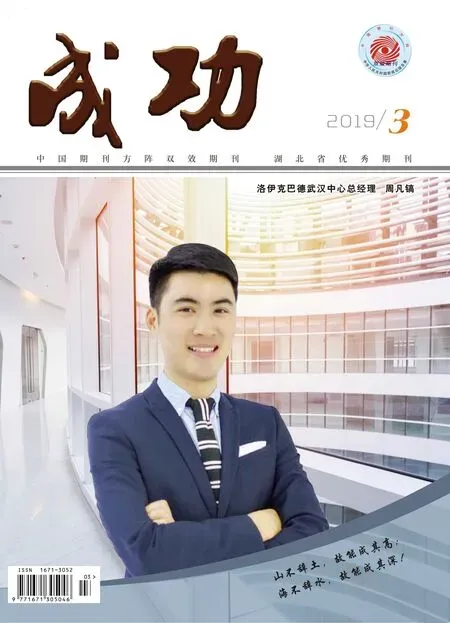The design and implementation of an augmented reality system
Danilov Boris Yong Wang
Department of Computer Science and Technology,Ocean University of China Qingdao,China,266100
Keywords Augmented reality,learning tool,model,information and communication technologies,marker,3D-modeling,Java,three-dimensional graphics,computer architecture.
The object of the work:applications of augmented reality,in particular,on the basis of the QR-label.
The subject of the work:possibilities and limitations of the use of technology augmented reality.
Objective:to propose possible options for consideration and implementation of augmented reality technology and also develop an app for the book of engineering graphics with the use of augmented reality.
To achieve this goal assumes the solution.
The following tasks:
1.Capture image from camera.
2.Training image:convert the image to grayscale,binarization of the image.
3.Image processing:die casting,search for closed contours,the analysis of the obtained circuits,filtering circuits.
4.Analysis marker:finding the corner points,the definition of squares,analysis of domains and identification markers.
Methods:the Theoretical basis of the thesis is made up with scientific and research literature about modern information technologies,journalistic and Internet resources.The practical significance of the thesis is presented in the form analysis of the need for the development of this technology.
Theses:In this paper we have discussed various aspects of the work from to per-formed reality and study the problem of interaction with the augmented reality object.We developed an application with which it is possible to work with objects augmented reality based on marker technology.When developing an application,we studied the many issues of image processing.And in the implementation of algorithms solved a non-trivial task.The identification problem is a major marker in the development of this application.In its implementation was developed following modules:
Capture image from camera.
Training image:convert the image to grayscale,binarization of the image.
Image processing:die casting,search for closed contours,the analysis of the obtained circuits,filtering circuits.
Analysis marker:finding the corner points,the definition of squares,analysis of domains and identification markers.
In more detail the interaction of the modules of the work program is presented in figure A.1.
At this stage realized the problem of recognition of the marker.In the latest version of the program to confirm the identity token,the original image has been darkened and made the image displaying identifiers of each marker and a scale as Figure in A.2.
The effectiveness of the program was tested empirically.A distinctive feature of the algorithm is high performance,and as a result of image processing are close to those of realtime.Also,the resulting algorithm allows the detection of multiple markers on the image at the same time,steadily determines the coordinates of each of them.The possibilities of the program include determining the rotation angle,tilt,and zoom markers,these are all necessary functions to future work with models of augmented reality.Thus,we can conclude that a module designed for recognition of markers is fully implemented.

Figure A.1-Interaction of the module

Figure A.2-Results of work
The objectives set in the beginning,was largely implemented.Not addressed is the issue of creating 3D models using the Java technologies.This is a difficult and nontrivial task,requiring the creation and import of the model of combination of coordinates of the marker in the image,the translation in world coordinates of the surrounding space and matching them with the coordinates of the obtained model.This requires the skills to work with coordinates:transformation of two-dimensional coordinates in three-dimensional and Vice versa.It is also necessary to take into account the rotation angle of the marker tilts,the different curvature of the drawing surface to make the display static,that is protected from interference due to which it can disappear that not allowed.This stage will be implemented in the future.
Now there are a number of ways to apply augmented reality technology in practice:tokens with augmented reality makes advertising entertaining;system motion detection for contactless control interfaces make the exhibition stands allow you to implement interactive and virtual fitting room;and layers of additional information are superimposed on the camera image,mobile devices,expanding their functionality.
It can serve as a prerequisite to the development of technology"machine vision","holography","simulated reality"and"artificial intelligence".In the future there will be new technologies,but people won't be able to resist the opportunity to extend or enrich their reality.
REFERENC LIST:
[1]Ramer-Douglas-Pecker Algorithm[Electronic resource]:Mathematics,2011.-Available at:http://49l.ru/a/algoritm_ramera-duglasa-pekera-23.04.2013.(In Russian).
[2]Babi,A.Augmented reality marker Recognition[Electronic resource]/A.Babi,2012.-Available at:habrahabr.ru/post/135659/.-12.04.2013.(In Russian).
[3]Boychenko,I.V.Augmented reality:state,problems and solutions/I.V.Boychenko,A.V.Lezhankin//Reports of Tomsk state University of control systems and Radioelectronics/Tomsk state University of control systems and Radioelectronics.-June 2010.-№1(21),part 2.-P.161-165.(In Russian).
[4]Profitable,M.Y.coordinate Transformation/Profitable M.J.//Handbook of higher mathematics Profitable;ACT:Astrel.-M.2006.-Div.3.-GL.4.-991 p.Il.(In Russian).
[5]The global satellite navigation system GLONASS.Interface control document.-Version 5.1.-M.the BRACKETS of defense of Russia,2008.-74 p.(In Russian).
[6]Gostev,I.M.methods of identification of graphic objects on the basis of geometric correlation//Physics of elementary particles and atomic poison-RA.-2010.-Vol.41,issue.1.-P.49-94.(In Russian).
[7]Zhuravel,I.M.the boundaries of the images:Edges and their detection/I.M.Zhuravel'//Processing of signals and images:Image Processing Toolbox Zhuravel.-http://matlab.exponenta.ru/imageprocess/book2/14.php.(In Russian).
[8]Image processing tasks:Elimination of image defects.Image enhancement:lectures on comp.count.2012.-78p.Il.(In Rus-sian).
[9]Through the looking glass-augmented reality technologies[Electronic resource];Mullen,2011.-Available at:www.artech.ru/technology.php-07.03.2013.(In Russian).
[10]Ivanov,A.image fill Algorithms,popular with video[Electronic resource]/A.Ivanov,2011.-Available at:http://habrahabr.ru/post/116374/.-26.04.2013.(In Russian).
[11]ARCchart's study"Mobile Phone Augmented Reality:Market Analysis and Forecasts":open part of the report,2010.(In Russian).
[12]Strelnikov,K.N.Research and development of algorithms for solving the problem of sustainable video tracking in large rooms:speciality 05.13.11"Specialty-Mathematical and software support of computers,complexes and computer networks":autoref.dis.on competition of a scientific degree.scientist.tap dance.kand.Fiz.Mat.Sciences/Strelnikov Konstantin Nikolayevich.-Moscow,2009.-22p.(In Russian).
[13]Fedorov,A.Binarization of black-and-white images:state and prospects of development[Electronic resource]/A.Fedorov,2002.-Mode to access:http://it-claim.ru/Library/Books/ITS/wwwbook/ist4b/its4/fyodorov.htm#Traer1.-07.03.2013.(In Russian).
[14]Augmented Reality Browser:Layar[Electronic resource].-Available at:http://www2.layar.com/.-4.05.2013.
[15]Azuma,Ronald T."A Survey of Augmented Reality."Presence:Teleoperators and Virtual Environments 6,4,-1997,p.355-385.
[16]Bakunov,G.C Conversion to grayscale/G.Bakunov//Grokking the GIMP:Open Publication License/G.Bakunov;Carey Bunks;New Riders Publishing.-translate from english-Part.10.-2003.(In Russian).
[17]Bryan S.Morse Lecture4:Thresholding Bryan S.Morse;Brigham Young University,2000.
[18]Otsu,N.A threshold selection method from gray-level histograms/N.Otsu:EEE Trans.Sys.Man.Cyber,1979.-62p.
[19]Visuohaptic Simulation of Bone Surgery for Training and Evaluation/Dan Morris,Christopher Sewell,Federico Barbagli//IEEE Computer Graphics and Applications.-2006.-Vol.26,№6.-P.48-57.
[20]Xiang Zhang,Visual marker detection and decoding in AR systems:a comparative study/Xiang Zhang,Stephan Fronz,Nassir Navab//Proceeding ISMAR'02 Proceedings of the 1st International Symposium on Mixed and Augmented Reality/EEE Computer Society.-Washington,DC,USA.-2002.-P.97-106.
[21]Yan Guo,Qingyun Du,Yi Luo,Weiwei Zhang,Lu Xu Application of augmented reality GIS in architecture//International Archives of Photogrammetry Remote Sensing and Spatial Information Sciences.-2008.-Vol XXXVII,Part B5,Commission V.-P.331-336.

